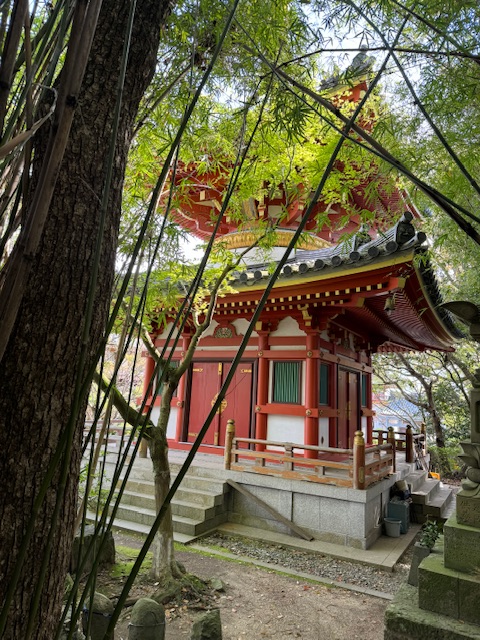But I am getting there. Sounds like my 1,400 kilometer walking path in Spain; sounds like life.
Is it easy? This walking? It is neither hard nor easy. It is just long and a lot. Ahead are 1,200 kilometers and 83 temples to go. The task is daunting but manageable. I only have five stamps in my stamp book. How in the world will I fill it up? Should I even be thinking about that? Well, yes. I am here for spiritual enlightenment.
I am here to enjoy myself, too.
Gratitude
For every morning that I wake up, I am grateful. What’s the inspiration?
I think about it. Again, good things follow me. I wanted to experience them as often as I can. I am here due to the culmination of my dreams – my life on this planet at this moment in time. That bears repeating … at this moment in time.
For some enmeshed in their faith, it is their spirituality that leads. I have witnessed many moving manifestations of that already at the temples. People visit the temples and engage in serious worship. I witnessed it on the trail in the mountains and I have witnessed it in my own emotion-filled reaction in front of a temple gate after a solitary walk through a forest.
I’ve been there before.
I say this often: I open my eyes, get on my feet, and prepare for this new day of walking and exploring.
I am grateful for this.
Plan for the day
My plan for the day – everyday – is pretty straightforward. Maps, signs, markers, and a guidebook are helpful. A little time in the morning or evening studying the route to the next few temples is a must. These tools help me make my calculations. I balance that with water and food breaks.
Finally, I make arrangements for the night’s accommodation. Time passes quickly.
I am a slow walker so I have to be honest about how far I can walk. My plan today is to visit five temples.
Today’s Temples
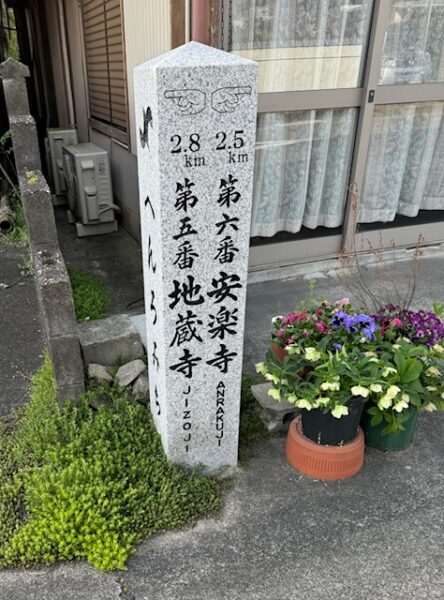
After the morning sun appears, I walk out the door and follow the path. I see other pigrims walking from their overnight accommodations. We have the same daily goals: visit the temples and sacred sites ahead, absorb the spiritual vibrations and move on. Still, I end up alone on the path until I reach my destination
Continuing on the trail…
Temple 6 Anraku-ji
Temple of Everlasting Joy
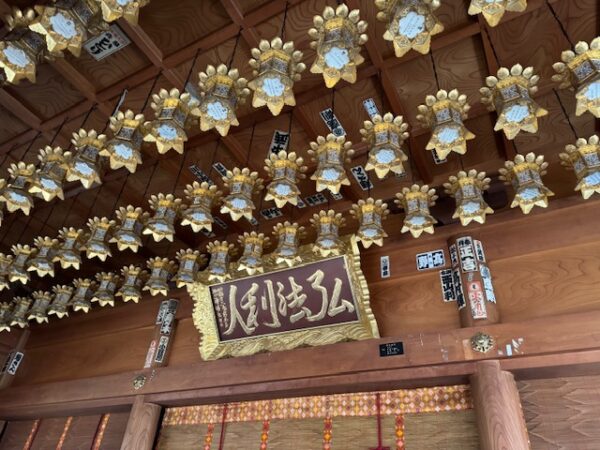
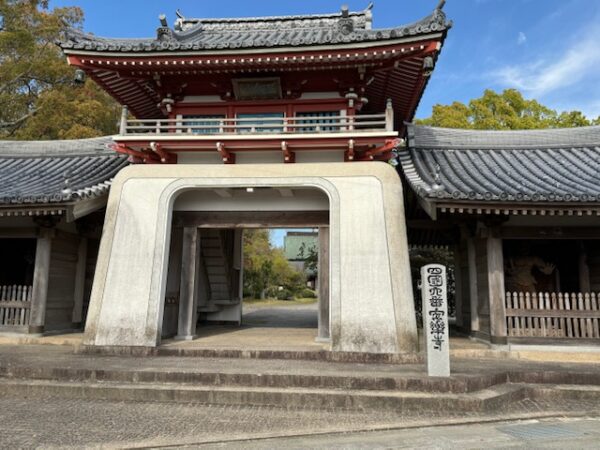
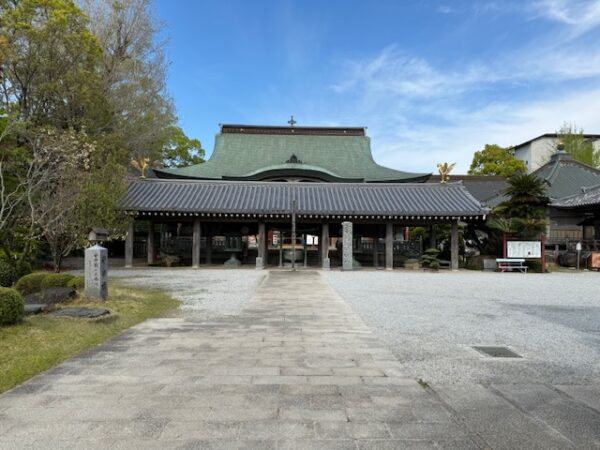
Temple 7 Juraku-ji
aka Temple of Ten Joys
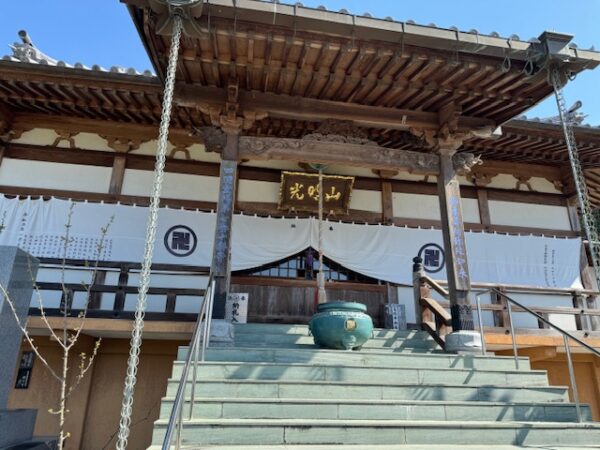
Temple 8 Kumadani-ji
Bear Valley Temple
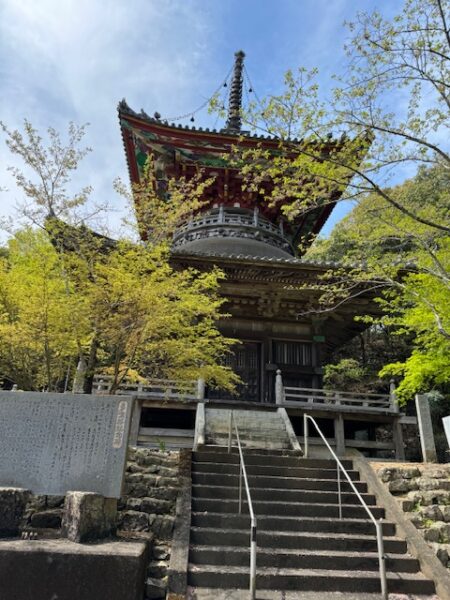
Looking Around
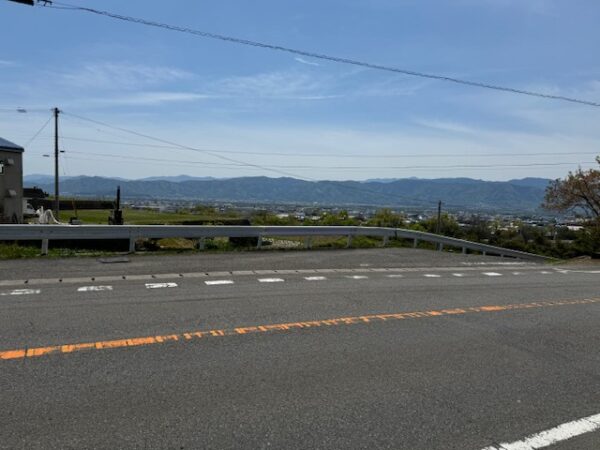
Hydration Stations
Although it is springtime in Japan, the weather has been very hot. I’ve been warned that the country is very warm during the late spring and summer months. Lack of hydration is a primary cause of illness and injuries, even death, for anyone who is on the path unprepared.
Fortunately, freestanding vending machines or as I call them “hydration stations” are on the path, in the forests, and on many temple complexes. There are a variety of soft drinks, water, and coffees.
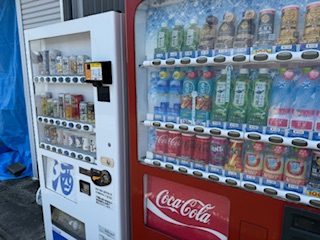
An old friend:

Temple 9 Horin-ji
Dharma Wheel Temple
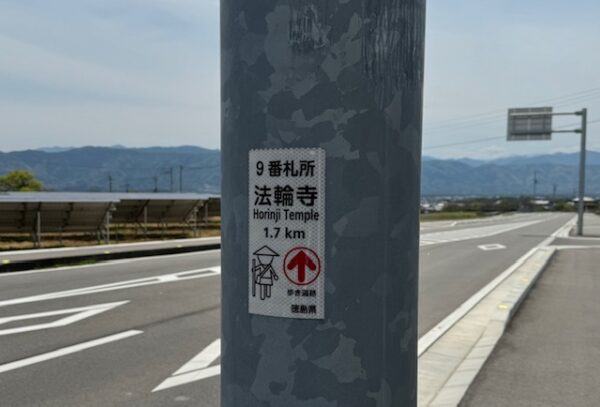
Pilgrims do not like the paved roads. I heard that comment from a lot of my fellow ohenros. How does the concrete make me feel? Well, it is the path. We do not get to choose.
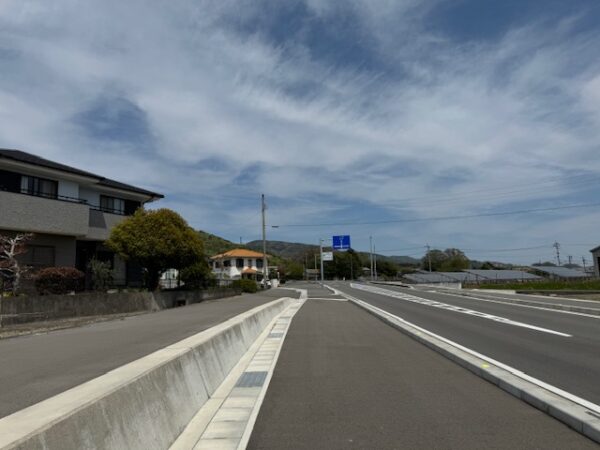
At home I walk on this most every day, wishing I could walk on grassy hills and softer surfaces. I can’t because I do not live in the country or a rural town. I walk where I can… happy for it. Yes, the pavement is hard on my feet. But having trained on the harder surface my experience helps me “accept” the road.
Mountain and forest paths are softer, maybe, but they introduce slippery and uneven surfaces. Some days I like them and some days I do not.
I just take it as it comes.
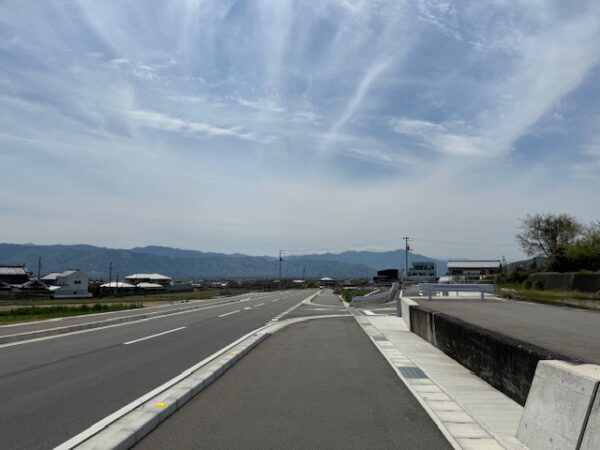
The vista along the path is beautiful and sobering. Mountain views include inactive volcanos, farmland, forests, and paved roads. Electric lines crisscross the skies.
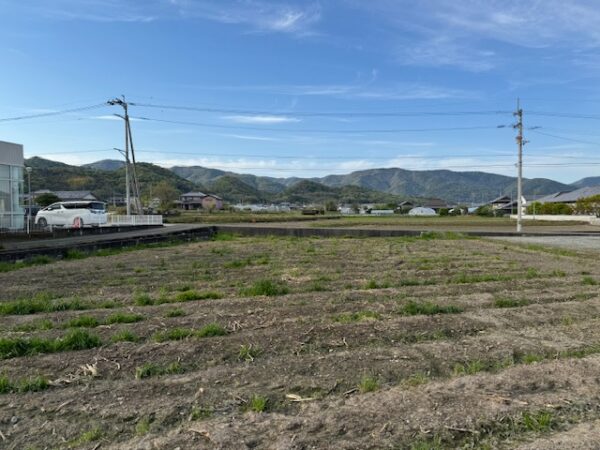
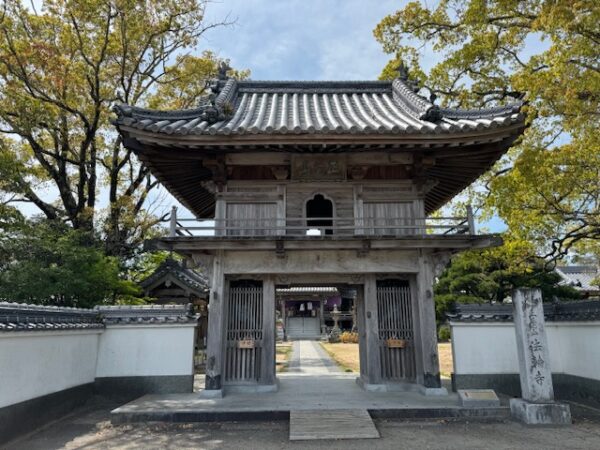
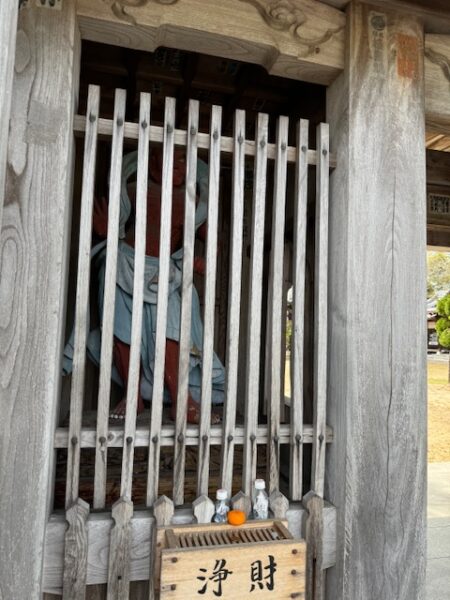
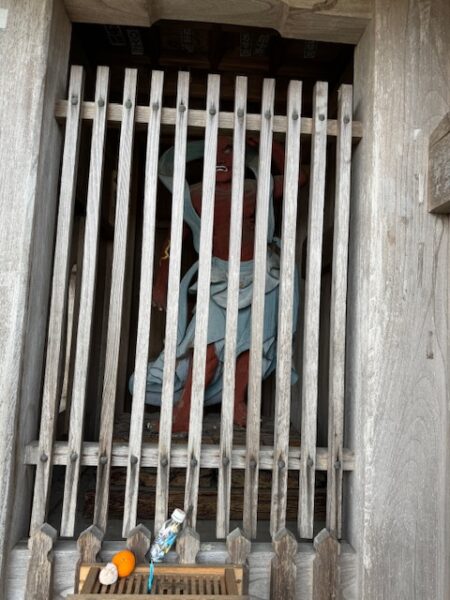
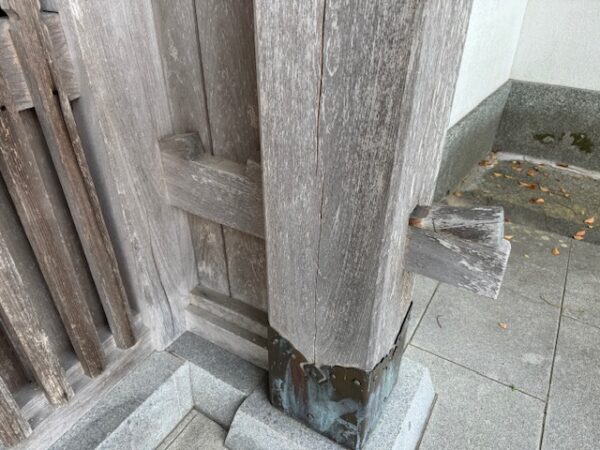
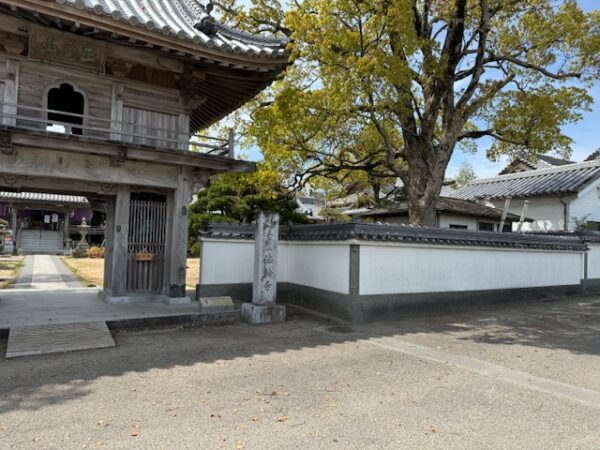
Big Osettai
These huts provide a bit of shade from the sun and shelter from the rain.
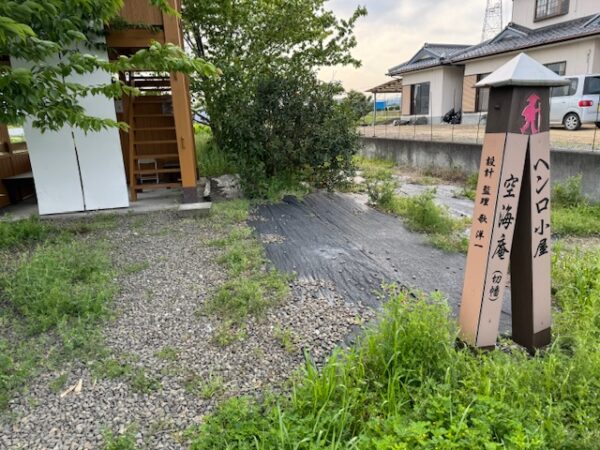
They are well-maintained by townspeople as osettai. The huts are also shown on maps and in guidebooks.
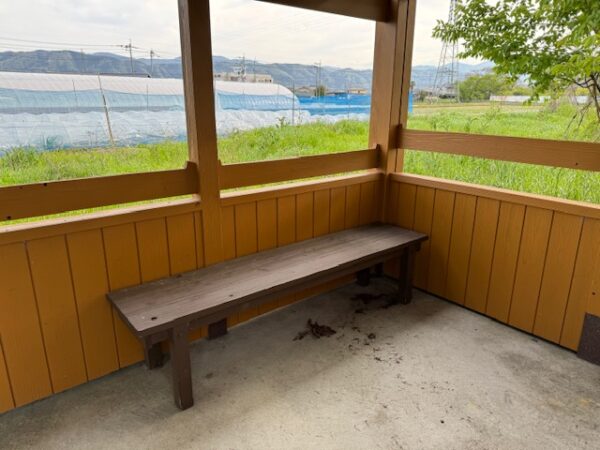
An Upsetting Revelation
Many temple structures in Japan are not in complete original form. They were altered or destroyed for reasons revolving around royal opposition to Buddhism’s growing influence in the country. Also, regional wars between ruling factions, sacking and bombing of cities and towns during World War II resulted in great damage. Accidental fires and intentional arson by an upset novice monk were familiar causes.
Most of the structures were rebuilt by wealthy patrons. Many were rebuilt by the townspeople. Unfortunately, some of the buildings were repeatedly annihilated or destroyed only to be rebuilt, again and again. The reconstruction usually followed the exact specifications for the original structures.
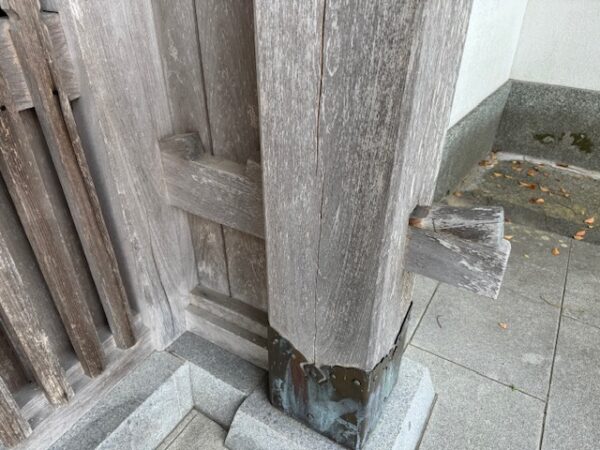
That means they were built with the same wood from the surrounding forests. Others were rebuilt with stone and concrete to reduce the loss of important temple and national treasures and papers housed within.
Often temples, statues, and bell towers were moved to or from or rebuilt in other locations in the country.
Does that make a temple, let alone any place, less sacred or relevant? It depends. Is an “ancient” structure completely rebuilt in, for instance, 1964 still meaningful? Especially in a time of waning religious and spiritual passion? When religion in contemporary times is used more as a weapon and less as a shaper of lives and minds for the good of humankind?
I have a lot of time to think about it.
A Funny Thought
The distance from my home to Osaka is 6,499 miles or 10,459 kilometers. I’ve come along way. It seems silly to compare – I only have less than 700 miles or 1,200 kilometers remaining. It is a fragment of the distance I’ve already travelled to get here. I smile to myself when I think of it that way because, obviously, I am walking. When I am hot, tired, thirsty, and discouraged, it is a fun thought to have.
One More on the Path
Temple 10 Kirihata-ji
Temple of the Cut Cloth
This is the first of a number of temples on the path that are entered and exited on the same walkway approach. It is a round trip to the temple and back onto the pilgrimage trail. The distance varies from several hundred feet to several kilometers.
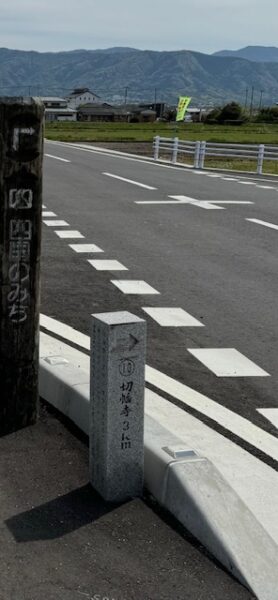
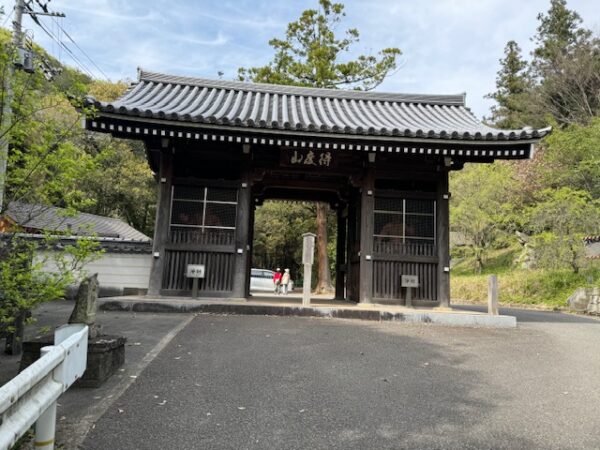
Niō guardians at the gate
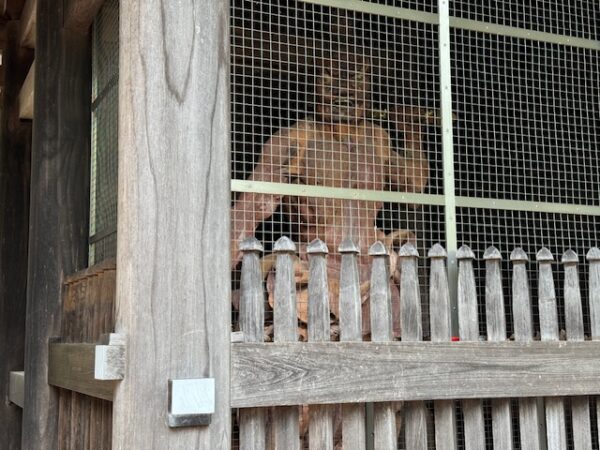
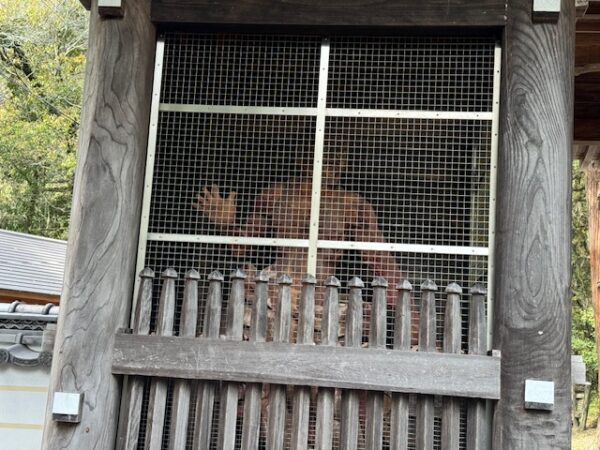
There are several levels of steps to get to the main temple structures. I left my backpack at a lower level structure so I could climb the stairs.
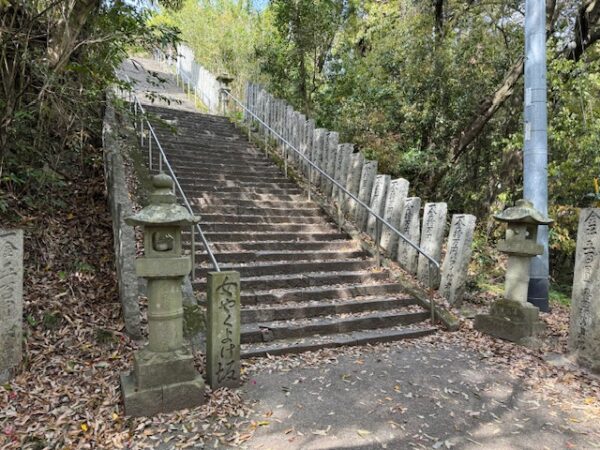
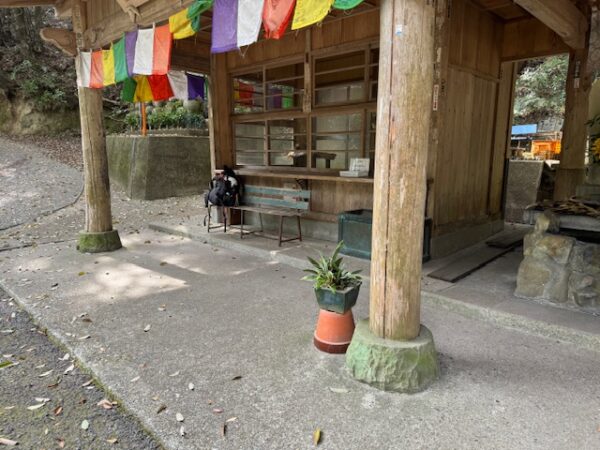
Then I continue the climb!
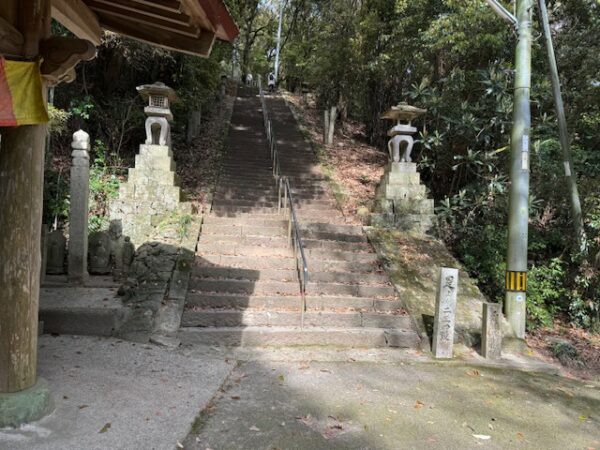
The steps are no joke. There are 333 of them from the temple gates to the main temple and beyond.
It feels good to get to the main hall. The bell tower welcomes anyone who wants to ring it!
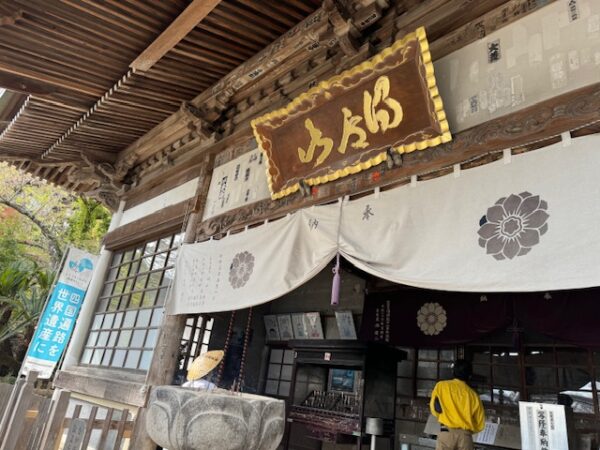
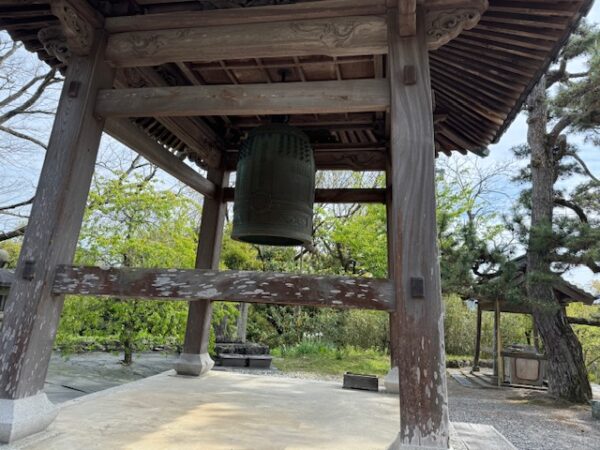
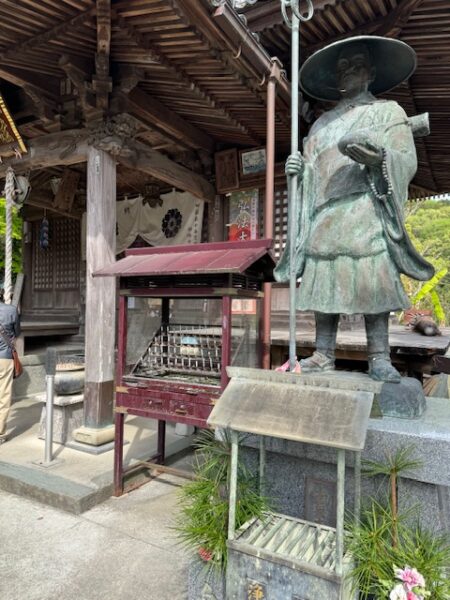
I am still in Tokushima. There are 13 temples remaining in this prefecture. It is an understatement, but yes, I have some walking to do.
Baadaye and Mata Ne (またね)
Shirley J 👣
•
During the spring of 2024, I began a pilgrimage in Japan where I am walking 1200 kilometers or 720 miles on the Shikoku trail from Temple 1 Ryōzenji to Temple 88 Ōkuboji and beyond. Read my original announcement here.
I am excited, and I am here, still walking. And just know this, I will return to tell the tale!
•

T6-10
